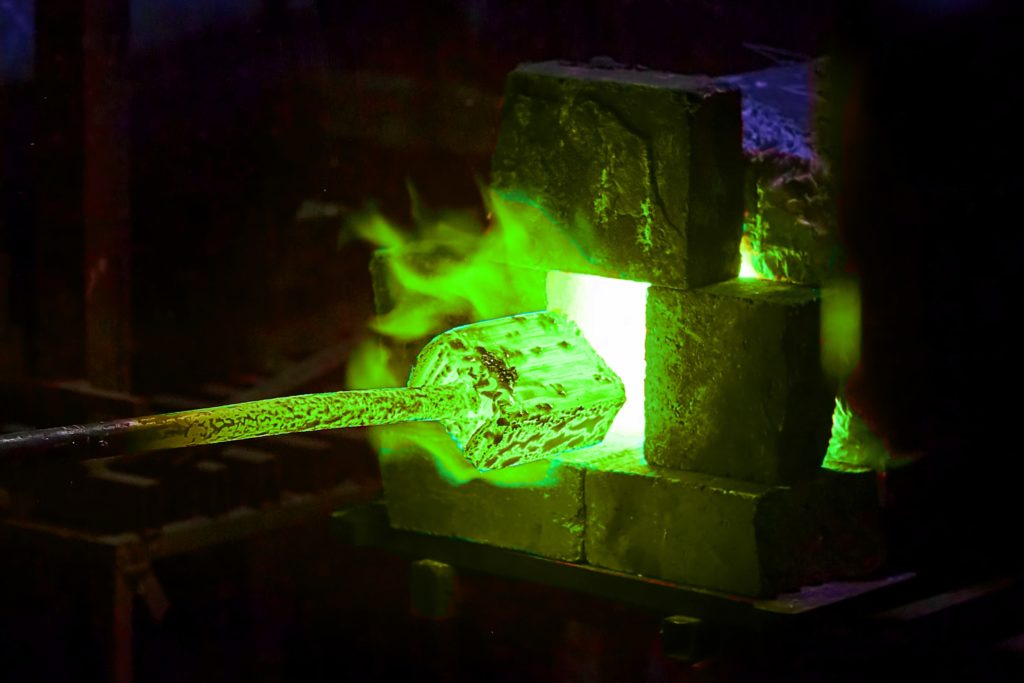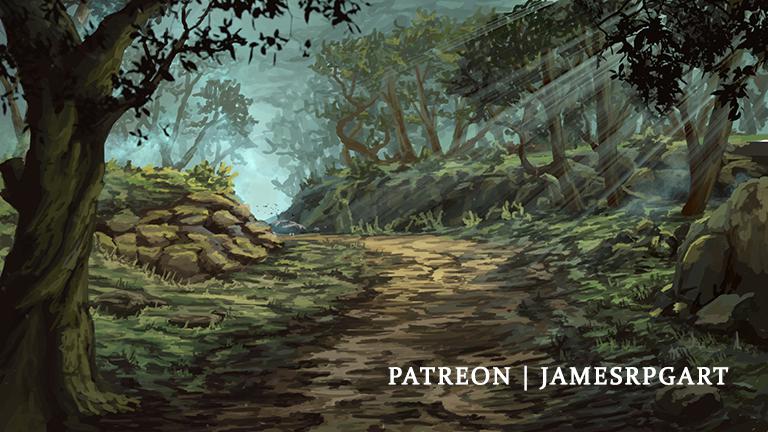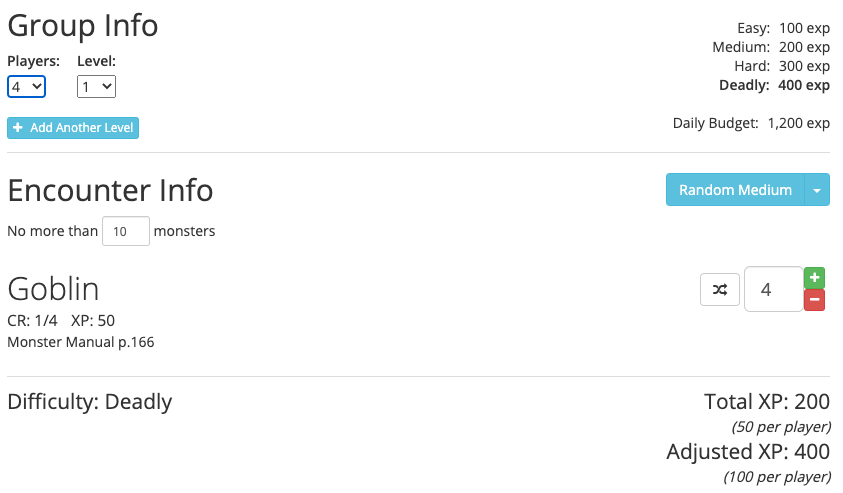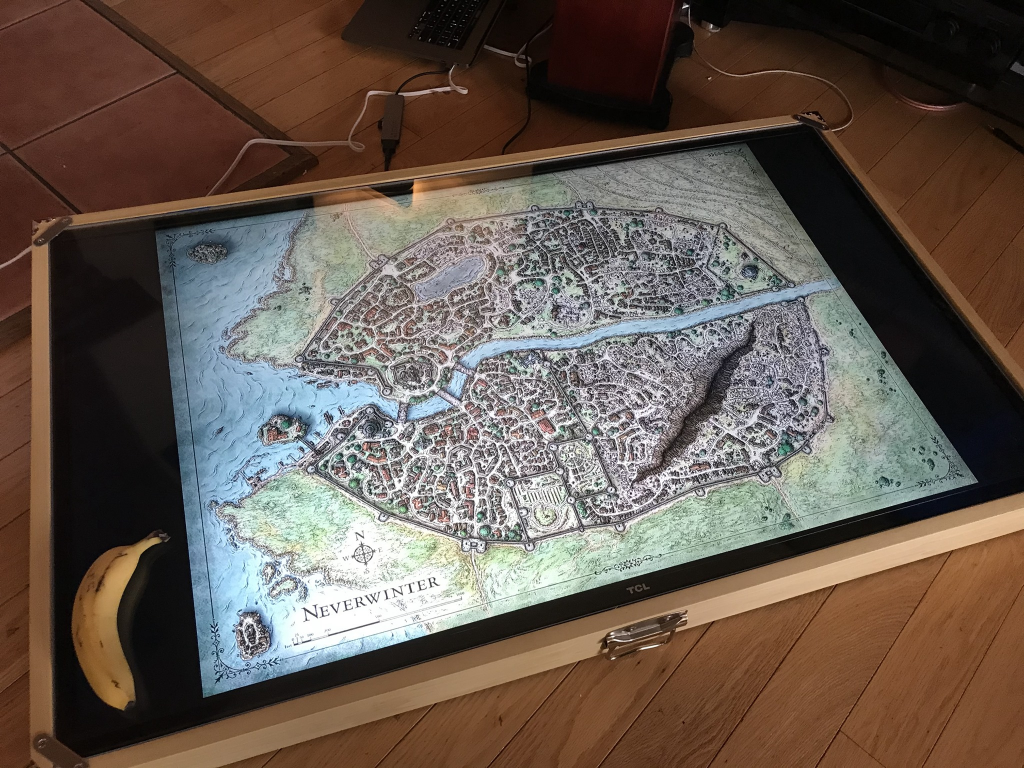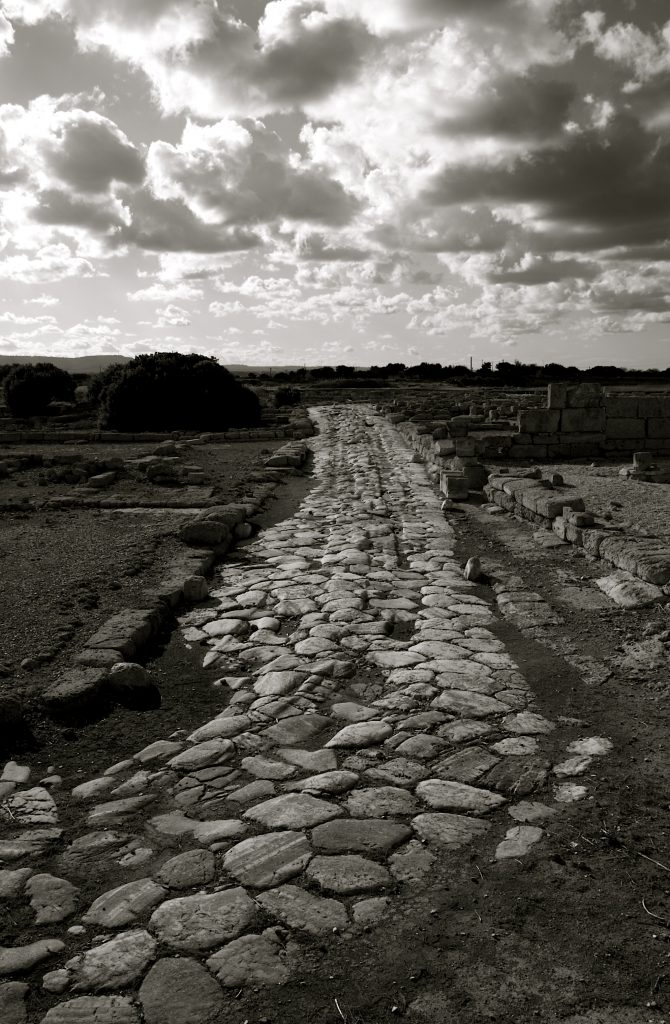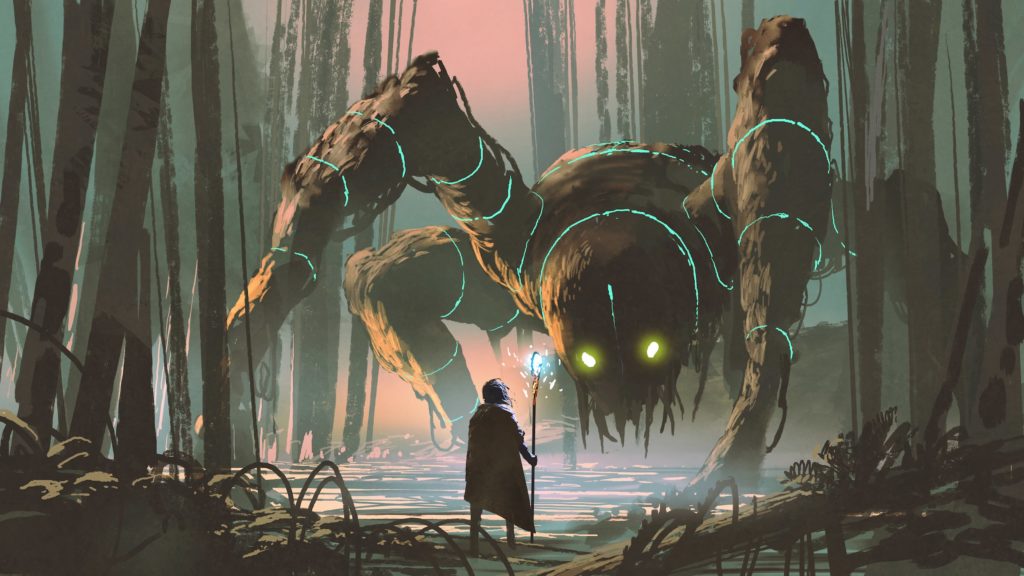
As a GM running Lost Mines I struggled with Nezznar the Black Spider more than any other NPC. Nezznar felt out of place, a barely fleshed-out baddie whose appearance at the tail end of the adventure felt tacked on. This made getting PCs to care about whether Nezznar lived or died a difficult challenge. If that wasn’t enough, Nezznar’s stat block made the final encounter far too easy for a level four party and not even close to the boss battle that would make a fitting end to the campaign.
But do not despair, brave GM! With just a few tweaks Nezznar can become the memorable villain that he deserves to be. In this post we’ll discuss some of those tweaks.
First, we’ll work on the Black Spider’s origins by answering an important question: How did a drow from the Underdark become the Black Spider in the first place? Next, we’ll talk about ways for the Black Spider to make an appearance earlier in the adventure so the PCs aren’t asking “who’s this guy?” when they finally meet him at the end. Finally, we’ll beef up the lackluster final battle and transform it into something that Sephiroth would be proud of.
Nezznar the Black Spider’s Origins
When fleshing out the backstory for Nezznar we need to answer a few important questions:
- Why did Nezznar leave his home in the Underdark?
- Why is Nezznar seeking the Forge of Spells?
Why Did Nezznar Leave the Underdark?
Although there are many drow Underdark cities, Menzoberranzan is the largest and the one for which we have the most lore. Thus, it makes sense to choose Menzzoberranzan as Nezznar’s original home as we won’t need to make up as many details on our own.
As a resident of Menzoberranzan, Nezznar almost certainly didn’t leave his home willingly. For drow, nothing is more important than exercising power over other drow. This is something that Nezznar would not be able to do if he left the Underdark. Even if a drow felt that they could gain power from some MacGuffin like the Forge of Spells, they almost certainly would not venture out to find it on their own, as doing so would mean to abandon their rank and station, and thus any hope of advancement in drow society.
Most drow live in matriarchal societies due to the influence of their Goddess, the evil spider queen Lolth. As a member of such a matriarchal society, Nezznar would be considered a second class citizen, but certainly not an unprivileged one. As a student of the arcane, Nezznar has a chance (however unlikely) to rise to the highest station available for a male drow: Archmage and Master of Sorcere, Menzoberranzan’s wizard school. Even if Nezznar doesn’t attain such a lofty station, he will still be more respected and feared than many other male drow.
As you can see, Nezznar has a lot going for him, so there’s not a very good reason for him to venture out on his own in pursuit of the Forge of Spells, as leaving the underdark would mean to forfeit his coveted position.
What then would cause Nezznar to leave Menzoberranzan? The most likely possibility is banishment. Some potential reasons for Nezznar’s banishment might be that:
- Nezznar was framed for a crime
- Nezznar actually committed a crime
- Nezznar failed an important mission
- One of Nezznar’s superiors failed a mission and blamed the failure on him
- Nezznar’s family lost a war with another family. All members of his family were supposed to be killed but somehow he escaped.
In addition to banishment, Nezznar may receive the curse of driderism. This is a curse by the goddess Lolth by which the afflicted are transformed into hideous spider creatures called driders. It’s possible that Nezznar has found a temporary cure to his driderism and needs the Forge for a more permanent cure.
Why Does Nezznar Want the Forge of Spells?
As I’ve already written an article focusing exclusively on the Forge of Spells, I won’t go too much into detail about the properties of the Forge here. Essentially, all we need to know for the purposes of understanding Nezznar’s motivation is that the forge is powerful and will allow Nezznar to do powerful things. Nezznar may need this power for personal revenge, or perhaps need it to cure a personal affliction like driderism. It’s also possible that Nezznar is working for some greater villain who wants the forge for reasons that don’t become clear until the next campaign.
Nezznar Needs the Forge for Revenge
While the potential targets for Nezznar’s revenge are many, let’s go with the current Archmage of Sorcere, Gromph Baenre.
I like the idea that Gromph saw Nezznar as incompetent and would never give him the time of day. As such, he would continue to pass him over for advancement. Nezznar, feeling that he deserved more, tries to plot against his master and fails miserably.
Having no other choice, Nezznar flees the underdark with his loyal “friend” Vhalak. Nezznar doesn’t know that Vhalak is a doppelgänger and it’s even possible that Vhalak is responsible for Nezznar’s foiled plans against his master. As a doppelgänger, Vhalak wants to seek out others of his kind (he hasn’t found Vyerith yet) and decides that exposing Nezznar and perhaps implicating himself in Nezznar’s crime is a good way to get them both banished.
As Nezznar’s companion, Vhalak continues to assume the identity of a fellow drow wizard. Since Vhalak shows a remarkable talent for magical disguises, he helps to build Nezznar’s network as the Black Spider by infiltrating the Lord Alliance and Cragmaw Tribe and recruiting Vyerith as an apprentice.
For more on Vhalak and Vyerith, check out my article about the doppelgangers.
Once Nezznar establishes himself as the Black Spider, revenge against the Archmage becomes his single and all-consuming goal. Vhalak suggests that they disrupt Gromph’s plans to summon and bind Demogorgon, one of the demon princes of the Abyss (As this is the premise of the Out of the Abyss Module, this would be a good segue into that adventure). Vhalak, being a doppelgänger being capable of reading the surface thoughts of others would likely learn of Gromph’s plans just by being in proximity to him.
Nezznar knows that a source of powerful magic like the Forge of Spells could potentially disrupt whatever ritual Gromph needs to cast in order to summon the great demon. Or, the forge of spells could be the key to crafting or repairing some legendary weapon that Nezznar would need to defeat his former master. Whether Nezznar can do this or not doesn’t matter (he probably can’t). The important thing is that he believes he can.
This makes for a really interesting dynamic because the world would probably be better off if the party lets Nezznar have access to the Forge of Spells. The party doesn’t know this, however, and Nezznar is so arrogant and xenophobic that instead of cooperating with the party he sees them as a nuisance impeding his plans. Should Nezznar survive his encounter with the party it’s quite possible that they will need to enlist his help to fight Gromph or some other greater villain for whom Nezznar bears a grudge.
Some Powerful Entity wants Nezznar to Secure the Forge for Them
Another possibility for the Forge of Spells is not that Nezznar needs it for anything, but someone Nezznar is working for happens to need the Forge of Spells. In my run of Lost Mines, Nezznar has been punished by Lolth for a past crime and has been transformed a drider. As this is considered a mark of great shame in Drow society, Nezznar would stop at nothing to return to his former self, even to the point of making a pact with an archdevil like Zariel.
Nezznar strikes the following bargain: the infernal being grants Nezznar an amulet which suppresses his drider form. In exchange for this amulet Nezznar must agree to conduct an infernal ritual which only a magic source as powerful as the Forge of Spells could fuel. Should Nezznar fail at this task, his soul would be forever enslaved in the nine hells. Should he succeed, Nezznar is permanently cured of his affliction.
What would an archdevil want from the forge? Perhaps Zariel or some other Archdevil wants Tiamat gone from Avernus. In order to do this they plan to use the magic of the forge to weaken the border between Avernus and the material plane, thus making it much easier for Tiamat to escape. This of course, makes for an easy transition into the Tyranny of Dragons campaign.
If you choose to go with the archdevil idea, be sure to leave clues about his affiliation with this infernal being. In my run of Lost Mines, I left the various reagents necessary to perform the ritual for weakening the border to hell as well as a copy of Nezznar’s pact written in infernal among his belongings.
Of course Nezznar’s pact doesn’t necessarily have to be with an Archdevil. Nezznar could form a pact with any great being who may have the power to restore Nezznar back from his cursed drider form. This being could be an archfey, a demon from the abyss, or even one of the great old ones. Choose whatever you feel would be a good match for your campaign.
How Can Nezznar the Black Spider Appear Earlier in the Adventure?
One commonly voiced complaint about the Lost Mines module is that the only time the party has an opportunity to meet Nezznar is at the very end. Because we don’t really know anything about the Black Spider, there is very little emotional investment on the part of the PCs to care whether he lives or dies. One way to solve this problem is to have Nezznar make an appearance before the PCs before they are ready for him. Another way is to drop more lore about the Black Spider as the party progresses in the campaign.
An Early Encounter with Nezznar
One potential spot for an early Nezznar encounter is right after the PCs have cleared the Cragmaw Hideout. I think it works pretty well and will definitely make the party hate Nezznar, but it also might be a little hardcore for new players who may not be ready for such an encounter in their second session of play.
At this point in the story, Nezznar wants to spend more time trying to find the Forge of Spells, but he’s more worried that some third party will find out about the Forge and overwhelm him with sheer numbers. This is why interrogation of the Rockseeker brothers is so important. Wanting to take care of this important matter personally, Nezznar decides to head to Cragmaw Hideout himself to ensure that the Rockseeker problem is taken care of.
After nabbing Gundren at the hideout, Nezznar heads to Cragmaw Castle with Vyerith and some loyal Cragmaw gobilns. Before they get very far, a frantic messenger goblin riding on wolf-back informs Nezznar that a party of adventurers has cleared out Cragmaw Hideout and rescued Sildar.
Cursing this turn of events, Nezznar directs Vyerith and the goblins to take Gundren to Cragmaw Castle while he turns around to deal with the PCs personally.
As the party heads down to Phandalin they will be ambushed by five giant spiders. Nezznar will be a hooded figure with a spider staff who uses misty step and darkness to escape should the party get too close. Nezznar will try to remain unseen behind the trees and will only be noticed by players with a passive perception above 15.
If The party loses against Nezznar and his spiders:
The party is close enough to town that Daran Edermath will notice the commotion and defeat the remaining spiders on his own. Daran will help carry unconscious party members to his orchard to help them recover. Daran mentions that he “might have seen a drow with a spider staff” but doesn’t believe a drow would be so far from home. This would be a good opportunity to do a lore dump on the drow as Daran would likely be knowledgeable about them.
It’s possible that some PCs could die here. If you want to go easy on the party, Daran will attempt to to stabilize dying players or even feed them a healing potion (this might be recommended for newer players).
Dealing with a PC death or even a TPK at this point shouldn’t be too hard though. Should the entire party or all but one party member die, roll up a new party who happen to be charged with investigating the PC deaths. Should only one party member die, the new character can be in Phandalin investigating the Redbrands and the disappearance of the Dendrar Family.
If you’re going to allow a TPK, be sure you mention that this might be a possibility to your players before you begin so you don’t catch them off guard.
If the party wins against Nezznar and his spiders:
This would be the less preferable outcome, as Nezznar will seem like less of a threat to the party. It makes sense that should Nezznar see the tide turning against his spiders, he’d immediately retreat. On the unlikely chance that Nezznar dies or gets captured, you can replace him with another villain of your choice who can assume the role of the Black Spider in Nezznar’s place.
Possible variant to the Encounter
One variation on the this Nezznar encounter would be a similar encounter after the party clears the Redbrand hideout. In this version of the encounter, the party would run into Nezznar as they leave the hideout. Nezznar, deciding that he doesn’t want to engage with adventurers powerful enough to have vanquished the Redbrands on their own, sends spiders to attack the party while he quickly makes his escape.
Nezznar Lore Drops and Clues
If you want to maintain more of a sense of mystery about the Black Spider but still want to insert him into the story more, you can leave more lore and clues behind at various spots in the adventure.
Some possibilities are:
- Work with one of the players to incorporate Nezznar into their backstory. Perhaps the Black Spider was responsible for the assassination of certain prominent figures in Neverwinter, one of whom the PC was close to. If you do this, be sure to give players an opportunity to discuss backstories (I provide a way to do this in my article about what to do before the Goblin Ambush).
- A bottle of drow poison is found in Klarg’s stash in Cragmaw Hideout. A high enough medicine check will let you know that drow poison is extremely rare outside the Underdark.
- In one of the empty cells of of the Rebrand Hideout is a corpse wrapped in spiderweb left by one of Nezznar’s pets.
- Halia once had a confrontation with the Black Spider. She has a dagger of drow make on her desk as a souvenir of that encounter. When asked about the dagger she will lie and say she bought it off a merchant in Neverwinter.
- One of the party members has a prophetic vision of the Black Spider doing something villainous, perhaps interrogating Nundro Rockseeker, Gundren’s brother.
- The Glasstaff that Iarno Albrek wields is a drow artifact.
Making the Final Black Spider Encounter More Challenging and Memorable
One of the ways to make the final Black Spider encounter more challenging is to have Nezznar transform into a Drider as soon as he’s defeated. If you do any amount of googling about how to improve the Nezznar encounter, you’ll find this is a common suggestion.
While I think turning Nezznar into a drider is a good idea, I think we can do more to give our players more of an epic boss battle feeling.
Generally boss battles will follow this progression:
- The party seems to defeat the villain, and it’s easier than we expect it to be. This would be Nezznar in the form of a drow wizard.
- A hideous transformation! The boss undergoes some drastic transformation in a desperate effort to stay alive. In this case Nezznar transforms into a drider. There are two ways this can happen: either Nezznar’s existing drider curse has been suppressed by some powerful magic which fails once he becomes unconscious or Lolth decides to curse Nezznar on the spot for being a failure.
- The final form! At half HP, Nezznar the drider manages to tap into their final reserve of energy, becoming even more hideous and formidable looking (perhaps even looking like the picture at the top of the post). At this stage Nezznar will have access to new abilities and can attack twice as fast.
While stage one and two are essentially two separate encounters that happen right after the other, the third stage of the Black Spider encounter will use some of the ideas about “paragon monsters” provided by Angry GM.
While I’m going to summarize Angry’s ideas as best I can for the purposes of the Black Spider encounter, I highly recommend you read his articles regarding building better boss battles here:
The idea is that we’re going to split the Nezznar Drider’s HP into two pools of hit points, each pool being 61 hp. You give Nezznar the Drider advantage on the first initiative roll and treat it as a regular combat encounter until Nezznar reaches half HP. This is when Paragon Fury (see stat block below) kicks in.
At half HP, Nezznar’s eyes will start glowing purple/black and is surrounded by an aura of energy the same color. We roll initiative again so that Nezznar now has two complete turns per round. In addition, Nezznar has access to a “spectral lash” power which is essentially a re-flavored version of the two-handed longsword attack. Also, we’re going to lower Nezznar’s AC to 16 as we want Nezznar’s vulnerability to increase as his damage output increases. This works out narratively as Nezznar will be more reckless and much less careful about blocking attacks in stage three.
Here’s the revised drider stat block you can use after Nezznar is defeated in drow form:
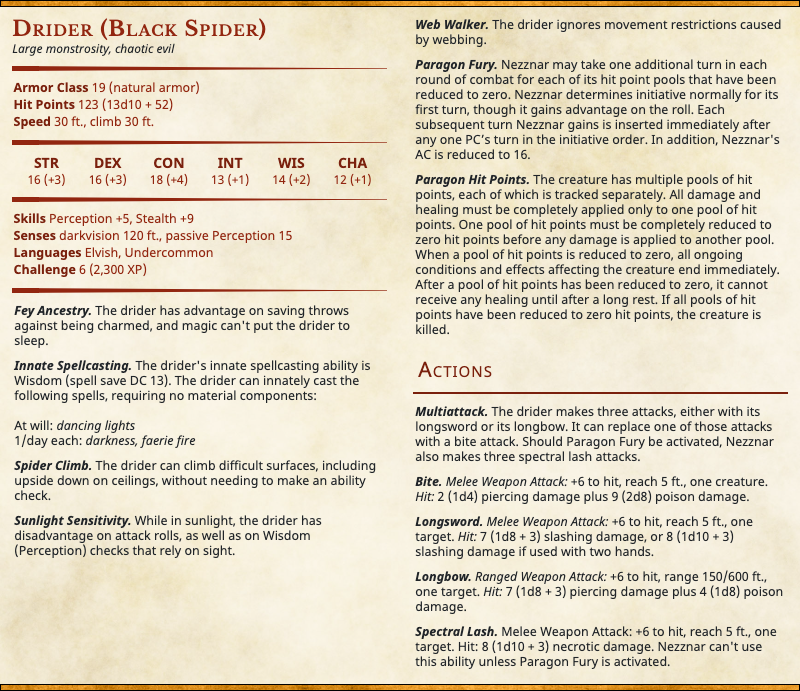
This is a relatively simple example of things you can do with a paragon monster. If you want to be fancy, you can have the behavior of the final stage be identical to some other monster. You could, for example, give Stage 3 Nezznar the abilities of a Bearded Devil. The infernal wound left by the devil’s glaive could be reflavored as a a spectral stinger or something else that leaves a lingering wound.
Because the bearded devil is rather weak, you can use the Monster Scaling Tool to make it a higher CR creature and then use a re-flavored version of the scaled-up devil stat block as Nezznar’s third stage.
As you can see, paragon monsters have a lot of versatility and have the potential to transform the final encounter with Nezznar the black spider into something much more memorable than it currently is.
Finally, you can use my Statblock Generator to create two statblocks: Nezznar before transforming and Nezznar after transforming. After Nezznar before transforming dies, you can just switch statblocks.
A Challenging Villain to Improve
Nezznar can be a challenge for GMs to improve because it seems unlikely a male drow would be on their own wreaking havoc so far away from the Underdark. Also, as a villain who makes their first appearance at the end of the adventure, he doesn’t really fit with the campaign. Finally, the mechanics of the final encounter leave much to be desired.
Making Nezznar a memorable villain will take some effort on the part of the GM, but hopefully the ideas provided above about Nezznar’s backstory, ways to weave him into the the narrative more, and tweaks to the final boss battle will be helpful.
What tweaks have you made to Nezznar the Black Spider? Please feel free to share them below in the comments!
…
For more posts like this, check out the Lost Mines of Phandelver GM Guide!
